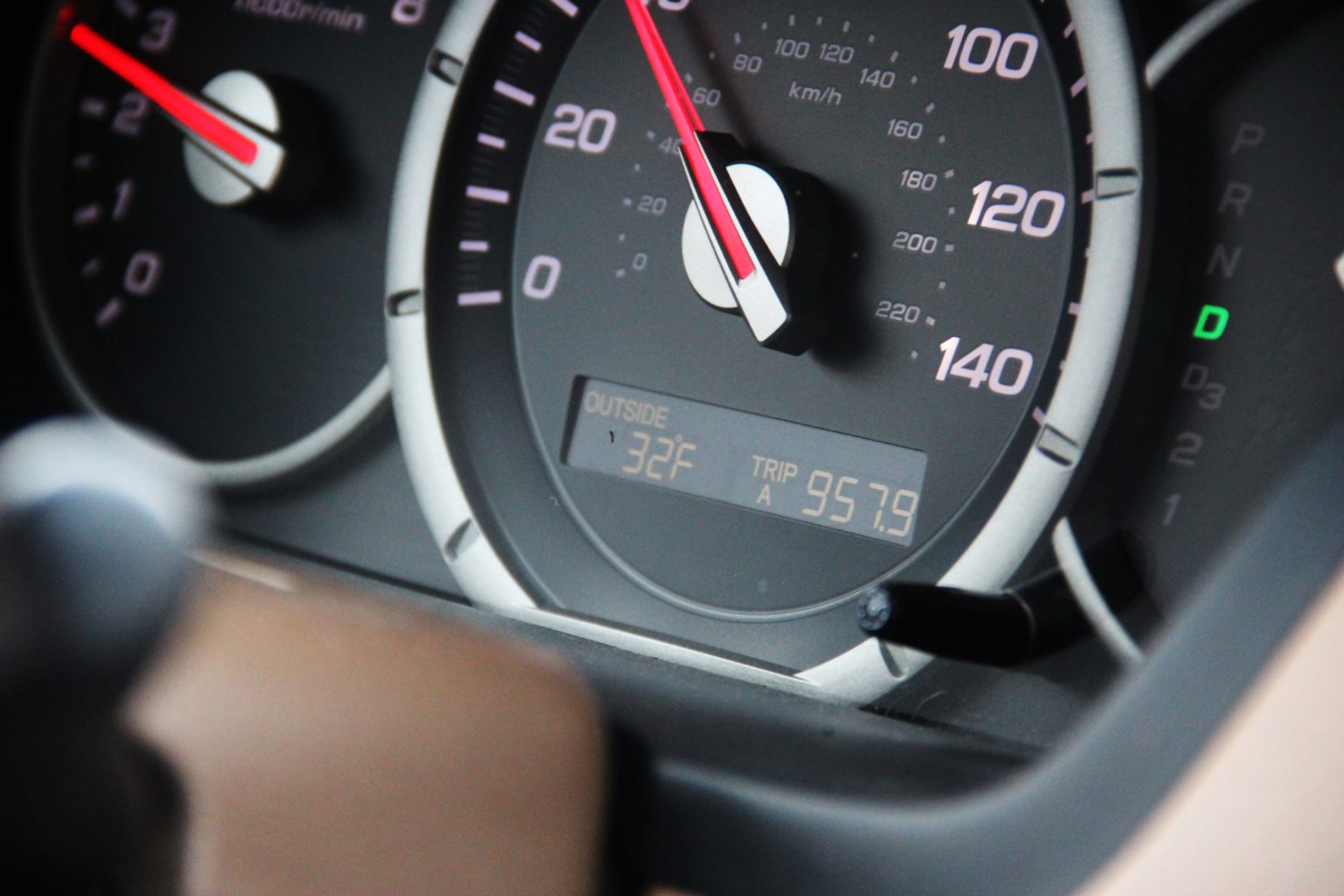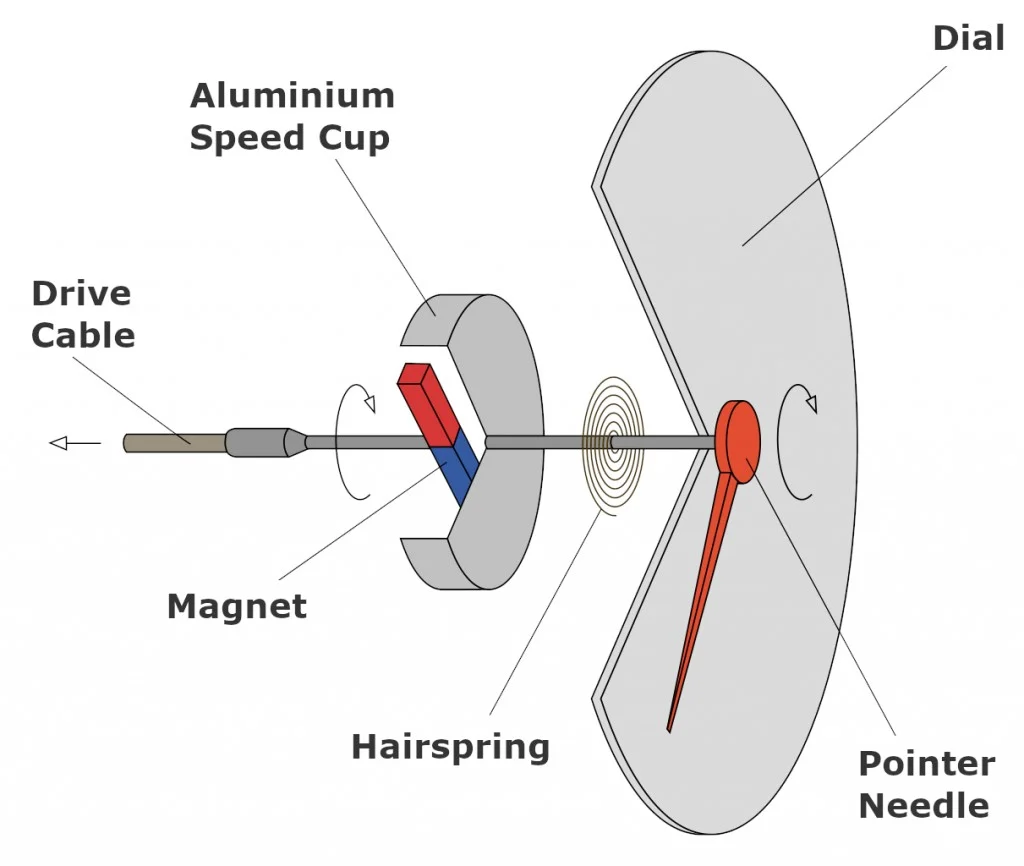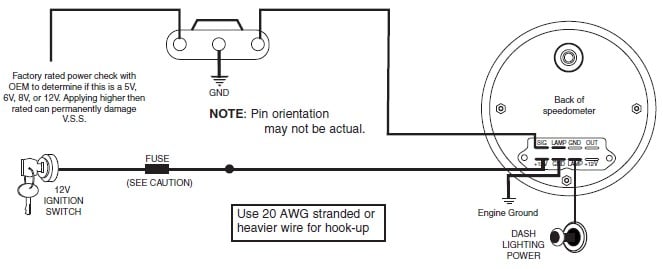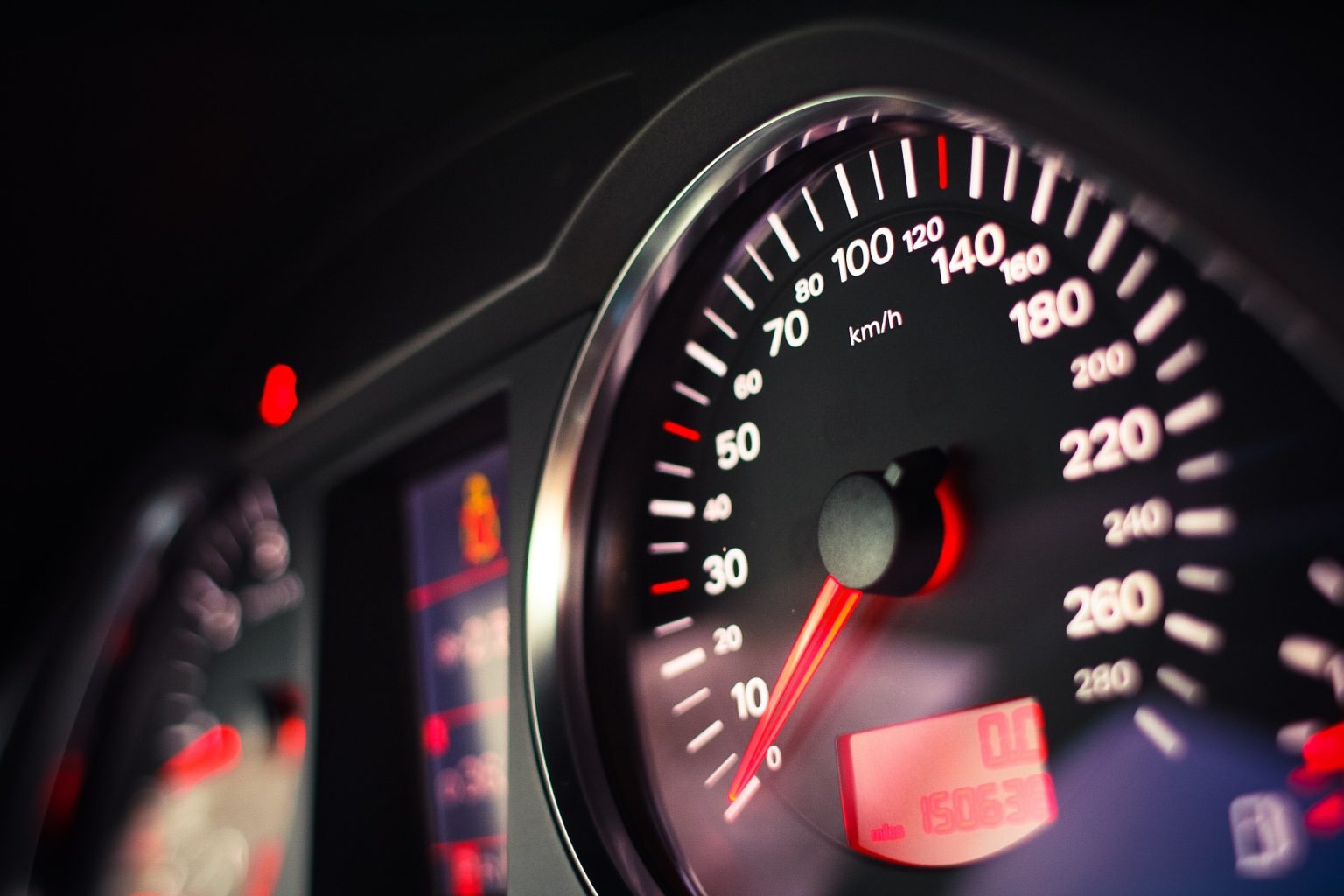“A speedometer is prone to mechanical errors, whereas GPS works by calculating the time it would take to travel from point A to B, making them the more accurate option.”
With a clear view of the sky, GPS speed has shown to be more accurate than most vehicle speedometers. “GPS isn’t perfect, but it’s a lot more accurate than a vehicle speedometer,” said Richard Langley, professor of geodesy and precision navigation at the University of New Brunswick, in an article for the Canadian Globe and Mail. GPS accuracy, however, may vary slightly as the vehicle travels from regions with a good view of the sky to those without. Heavily tree-lined streets and urban canyons are the biggest culprits when it comes to GPS inaccuracy, in addition to tunnels and covered parking lots.
Your vehicle speedometer accuracy can vary based on several factors, most notably differences in wheel size due to wear, pressure, and temperature. It is also typical for many motor vehicle manufacturers to have their vehicle speedometers overreport the speed to ensure that if there are errors from the sources mentioned above. “Industry officials have said speedometers are set ‘optimistically’ to give drivers an inflated sense of speed (and help them avoid tickets)”

How do speedometer and GPS devices measure speed?
To understand why a speedometer provides slightly inaccurate readings, we first need to understand how speedometers and GPS devices measure speed. The speedometer on your vehicle can be either an electronic one or a mechanical one. Mechanical speedometers have been around since the 1900s, whereas the automotive world didn’t see the first all-electronic speedometer until the late 1980s. Most modern vehicles use an electronic speedometer to gauge and display the speed of the vehicle.
What Do We See in the Data?
In the past, we have seen erroneous jumps in speed when GPS accuracy varies, as the vehicle moves into areas of reduced signal strength. The most common examples seen are speed spikes of a single second as a vehicle travels under a bridge or overpass. Subtle jumps in position while stopped (GPS wobble) can cause low speeds to appear when the vehicle should be stationary.
Mechanical Speedometer
Mechanical speedometers are simple in construction and consist of the following parts: drive cable, magnets, speed cup, a hairspring, and the terminal pointer needle on the dashboard. The drive cable is a flexible cable (a collection of small helical coil springs tightly wound around a central wire or mandrel) attached to the transmission of the vehicle. To be more precise, the drive cable is connected via a small pinion gear to the gear wheel on the output shaft of the transmission. The output shaft is connected to the wheels of the vehicle and imparts its rotational speed to them. Thus, connecting the drive cable of the speedometer to the output shaft provides a relatively accurate assessment of the vehicle’s speed.
When the vehicle is in operation, the rotary motion of the output shaft is carried over to the central mandrel of the drive cable. The drive cable therefore starts rotating at the same speed as the output shaft, which rotates at the same speed as the wheels of the vehicle. The other end of the drive cable connects to a magnet, which sits inside the speed cup. The magnet does not actually touch the interior of the speed cup, as a certain air gap is maintained between the two.
The rotary motion of the drive cable is imparted onto the magnet. As a result, the magnet creates a rotating magnetic field around itself. The faster the output shaft rotates, the greater the strength of the magnetic field, forcing the speed cup and the pointer needle to move farther along the speed dial. The pointer needle stops turning when the opposing torque of the hairspring equals the torque due to eddy currents; and points towards a correct value of speed on the dial.

Electronic Speedometer
Electronic speedometers are also sometimes referred to as programmable speedometers, the terms are not interchangeable however. Electronic speedometers have been in use by car, vehicle, boat, military and just about anything that moves for about 40 years now.
Electronic speedometers accept an input from some sort of signal source- more on this subject in a bit. This signal source is generally a speed sender located in the transmission, the vehicle’s PCM (power train control module , ECM, computer) or a GPS sender (which can be mounted in the vehicle or the gauge itself). Old style mechanical speedometers used a cable directly connected to the tail shaft on the transmission, transfer case or even a wheel hub. While these are still in use today in the aftermarket, the trend has been going electronic for quite some time. The benefit of electronic speedometers is they can be custom tailored to the individual vehicle by setting DIP-switches, programming via the LCD or hard programmed at the factory.

How Do We Ensure Accuracy?
We use GPS settings such as dilution of precision (DOP) masks and GOS reported speed accuracy estimates to invalidate data. We only consider data valid if there are a sufficient number of satellites being used and the changes in speed between subsequent GPS readings are realistic. Also defers told the engine-based road speed if the GPS speed is invalid or the vehicle is stationary to counter GPS wobble.
GPS is not an exact science, and we still see the odd invalid speed making it through the GPS’s, as well as our validity checks. Because of this we maintain that any speeding rules need to see multiple seconds worth of data above a given speed limit.

The difference in accuracy between a speedometer and a GPS device isn’t huge, to be honest. The speed might display your speed as 100 kmph but GPS, being the more accurate of the two, knows the true speed and would display a value in the neighborhood of 92 kmph. This difference arises due to mechanical errors and the handicaps set by the manufacturers. These techniques and the inaccurate readings of a speedometer are often a blessing in disguise, as they prevent drivers from driving recklessly or getting tickets all the time!
